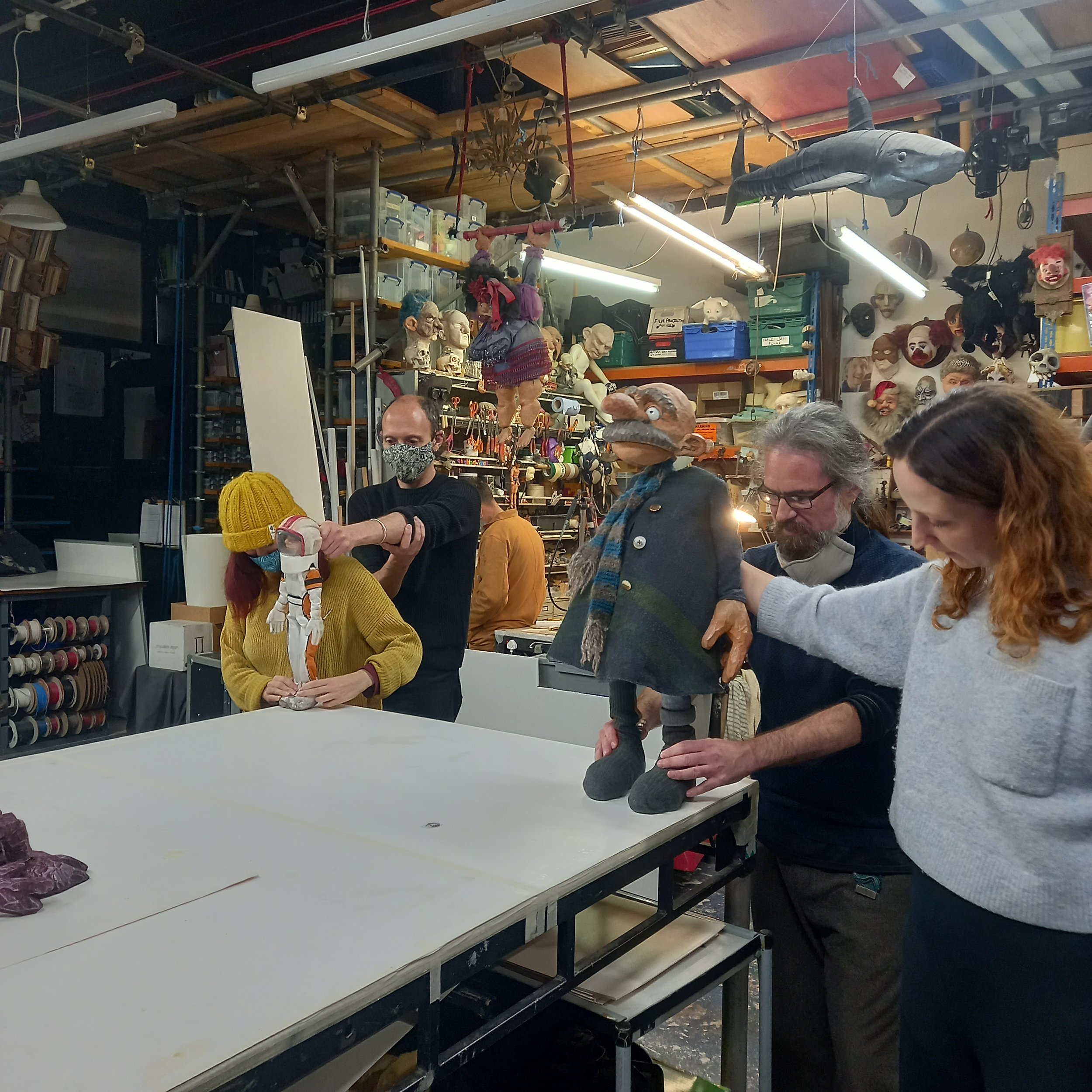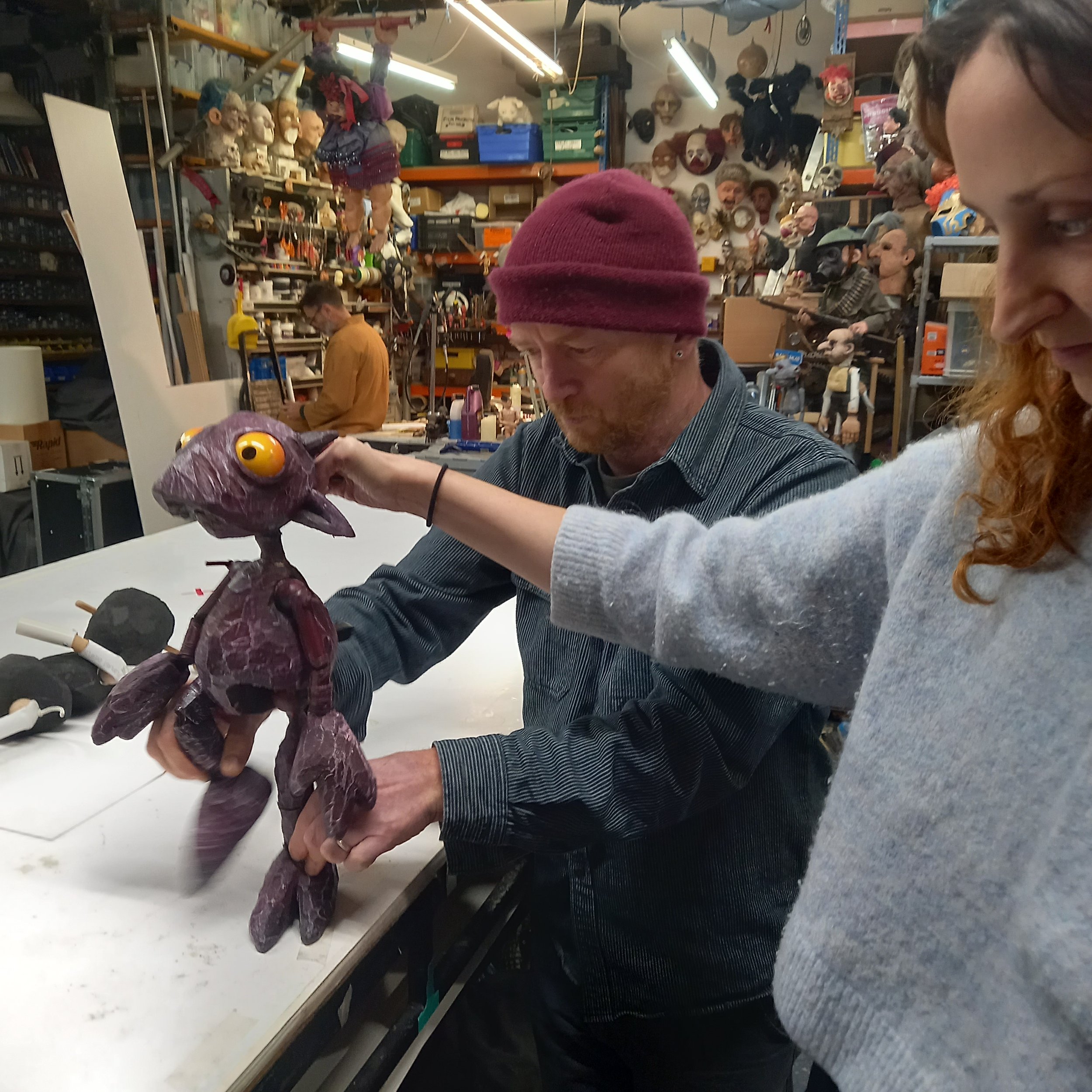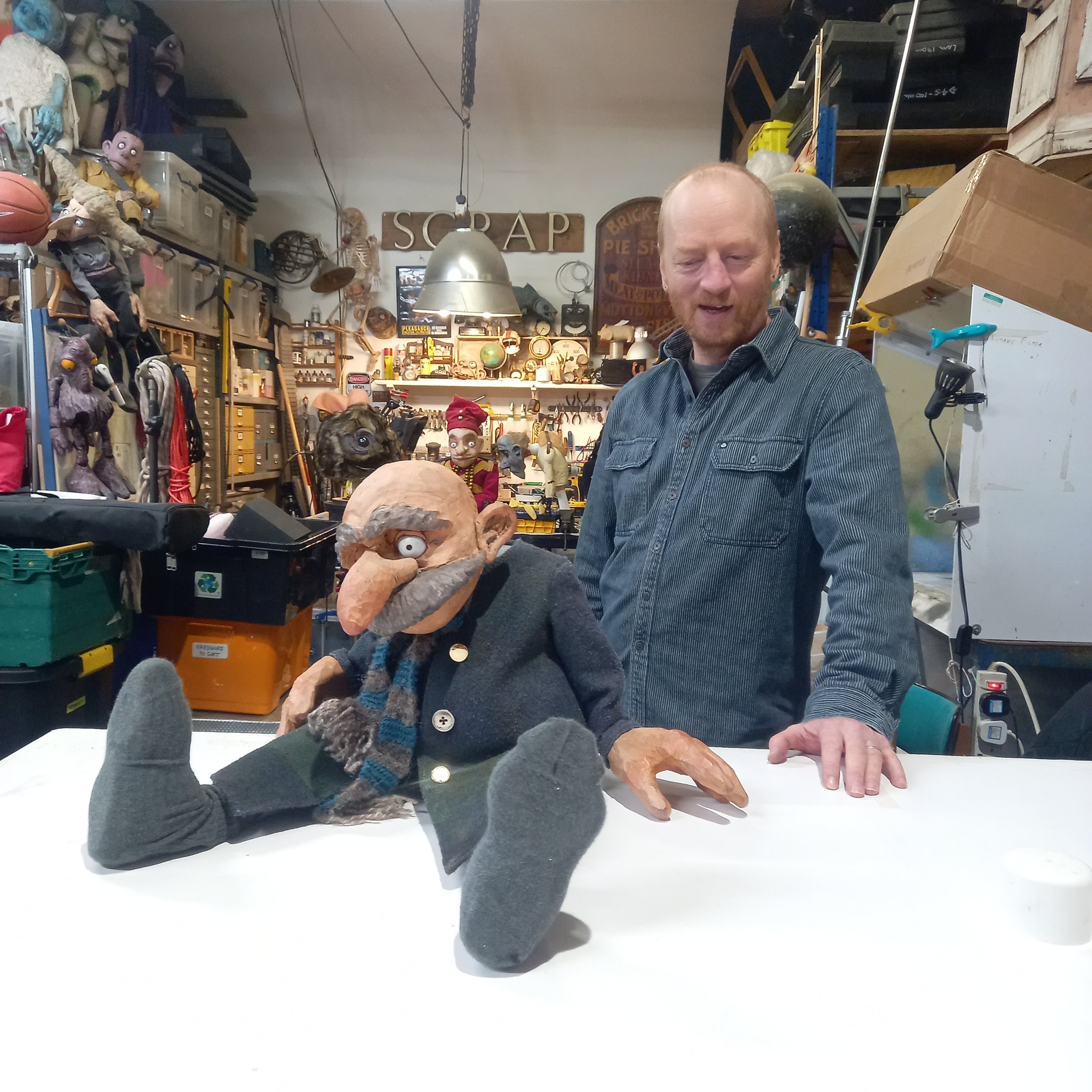Making the Inanimate Animate
Thanks to Cat Rock (House of Funny Noises) and Chris Pirie (Green Ginger), two of my mentors at Puppet Place, I’ve been introduced to the fundamentals of and had opportunity to explore puppetry through workshops and ongoing conversations as part of my DYCP.
With Cat Rock, I explored puppetry over several days of workshops and was joined on one of those days by Izzy Bristow. Together we were able to expand our learning and even devise a short piece with the puppets available.
Chris Pirie ran a multi-operator puppet workshop for myself, Amy Baker, Ben Mars, and Helena Houghton, which he kindly extended to the other participants for free thanks to the funding I had received.
“What is a puppet?” was the first question both Cat and Chris raised in the workshops, and our answers ranged from the “The inanimate, made animate” to “Any object or thing that is manipulated”.
Although, I like “The inanimate, made animate”, perhaps it is the writer in me and how it sounds, “Any object or thing that is manipulated” is a much broader definition. For example, the very first time I encountered Dik Downey (Opposable Thumb), one of the other residents of Puppet Place, was at their show Coulrophobia, where I was taken from the audience and used as a puppet on stage.
In the workshops, both Cat and Chris highlighted three principles at the core of all puppetry:
Grounding - The world within which the puppet exists and the rules to which they adhere.
Focus - Your focus on the puppet and the puppet’s own focus on the world they inhabit.
Breath - Your own breath and the life you breathe into the puppet.
Grounding can best be described as the physics and rules of the world that your puppet or puppets inhabit. It can be the fixed point around which the puppet moves, for example, the floor on which they walk that may or may not be visible to the audience. But it isn’t limiting, as the rules of the world that a puppet inhabits do not need to follow our own experience. In many respects, this is where puppets excel, whether that is taking flight into the heavens or diving deep into the oceans.
Grounding does need to be consistent though. The puppet and the puppeteer must sell the rules of the puppet’s world to the audience and, if relevant to the story, break those rules in understandable and equally consistent ways.
Of equal importance is Focus, both by the puppeteer on the puppet and the puppet on its surroundings. With the former, the act of looking at and focusing your attention on your puppet doesn’t only improve your ability to perform, but it guides the audience’s attention to where they need to focus. The act of focusing in this was is a contract between the puppeteer and the audience; if you focus on the puppet and believe, the audience will too.
Alongside the puppeteer’s focus, the puppet itself, regardless of whether it has eyes or even a face, needs to focus on its surroundings. The simple act of making the puppet aware of its world brings it more to life. It also helps convey the puppet’s thoughts, its wants and needs, to the audience. Depending on the puppet itself, this focus might need to be exaggerated to convey intent, for example, a full head turn might be necessary to convey the puppet spotting something out of the corner of its eye.
Breath is the final part of the elixir that brings a puppet to life. An awareness of your own breath, breathing with your movements, means that both your puppetry and your performance will flow more smoothly. It seems obvious, but to those unfamiliar with performing like myself, it is all too easy to hold your breath and be disconnected from your body.
If you’re not breathing correctly, then your puppet is not breathing correctly either. This can lead to the puppet looking overly still, rigid, or even dead. For most puppets, breath, a slight hint of life, should always flow into the puppet even when they’re being still or passive.
But it is the combination of these three principals, Grounding, Focus, and Breath, that truly brings a puppet to life.
This introduction to the basics and fundamentals of puppetry, especially grounding, leads into a question that all of my mentors posed in some form or another across my DYCP, which I’ll try to address in another post, “Why puppets?”





